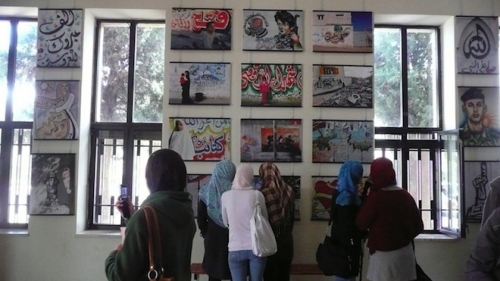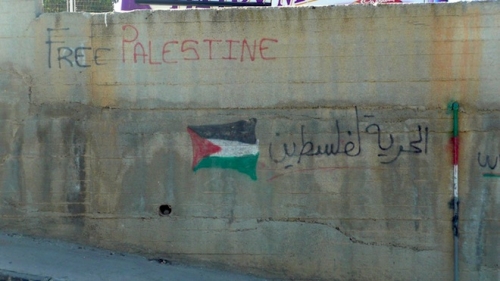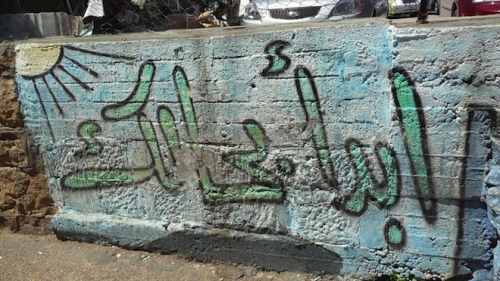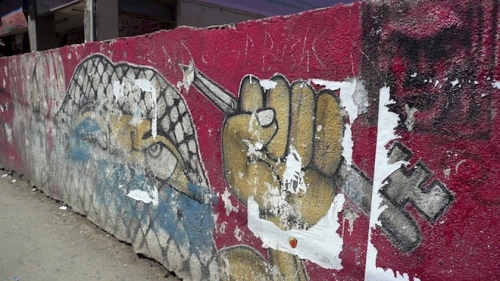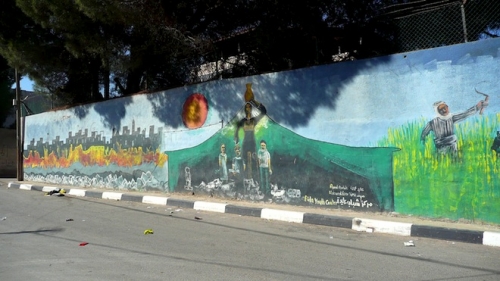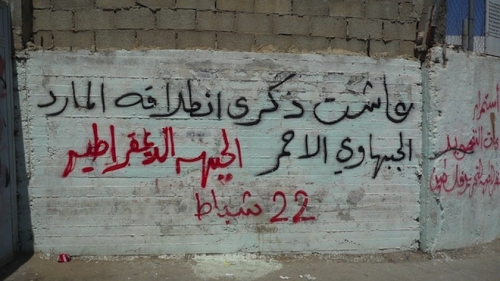Posted on: March 3, 2015
By Hugh Lovatt
Judging by a quick Google search and perusal of Facebook and Twitter, the renowned British graffiti artist has managed to put Gaza and the plight of its inhabitants back into the international spotlight. Something badly needed given that six months after the longest and bloodiest round of fighting to date, Gaza has fallen off the international community’s foreign policy agenda, even as the still devastated Strip slips towards yet another round of violence with Israel. Yet despite this devastation, or perhaps because of it, urban art has flourished there.
Even before Banksy’s recent trip to Gaza, Palestinian graffiti had already reached a high degree of aesthetic refinement. In fact, the development of graffiti in Palestine can be traced all the way back to the First Intifada where it was an integral part of the Palestinian national movement and the strategy of civil disobedience against Israeli occupation. Banksy and other foreign artists have though provided local Palestinian artists with a unique insight into the latest techniques and trends, creating a unique form of graffiti that mixes local and global aesthetics.
The West Bank has steadily turned into one of the most established graffiti scenes in the Arab world, if not the whole world, offering stunning examples of the various forms into which graffiti can evolve.
CRAFTING A NATIONAL NARRATIVE OF RESISTANCE
Graffiti traces its origins back to the first Palestinian Intifada during which it was primarily used as a vehicle for the articulation of Palestinian identity. This was especially important due to widespread crackdowns on Palestinian nationalism by Israel as well as the banning of Palestinian flags and public declarations of allegiances to Palestinian political organizations.
As a result, graffiti was one of the few uncensored channels of expression through which Palestinians were able to safely articulate their repressed Palestinian identity without fear of Israeli retribution.
Following the end of the First Intifada, graffiti in the West Bank started to develop aesthetically beyond simple tags or scribbles to focus on more visually pleasing pieces. These nonetheless retained their value as didactic sub-texts that can be read and de-coded by Palestinian audiences.
A major part of this visual aestheticization was the incorporation of popular Palestinian symbolism, such as the widespread use of the pre-1948 map of Palestine, the al-Aqsa mosque and the recurrent image of the key symbolising the right of return for refugees as well as the black and white kufiya representing Palestinian nationalism, and the olive tree depicting the Palestinian concept of sumud or steadfastness.
But without a doubt the most popular symbol is that of a ten-year-old boy named Handhala. First created by the Palestinian journalist Naji al-Ali in 1969, the character is typically drawn turned away from the viewer with his hands crossed behind his back. Since then Handhala has become synonymous with Palestinian non-violent resistance, and more recently a symbol of Palestinian “hip-hop” culture.
Part of the widespread appeal that such objects represent for graffiti artists is their ability to produce a deep emotional response through relatively simple imagery that is easily reproduced, even by those relatively unskilled. More importantly, these images are easily recognized and understood by Palestinians, both in Israel as well as in the OPTs and diaspora communities around the world, as they form an integral part of a common Palestinian cultural heritage. As such, these images constitute hidden transcripts capable of mobilizing Palestinians around a national discourse by creating an imagined community tied to a common spatial identity and forged through collective suffering and individual losses.
POLITICISING GRAFFITI
As the numerous political slogans adorning Palestinian walls attest to, graffiti has also been seized upon by Palestinian factions such as PFLP, DFLP, Fatah and Hamas who see in it an effective means of disseminating their own propaganda.
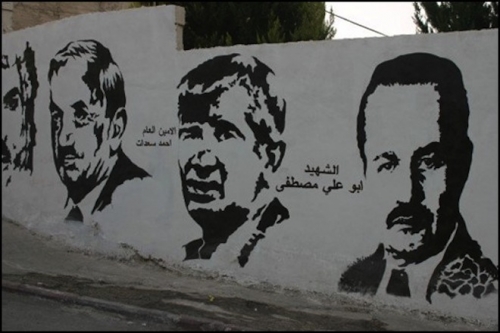
Mural celebrating the PFLP’s leaders and martyrs in Bethlehem. Photo courtesy of the artist “Muhannad”
Graffiti murals glorify the leaders and martyrs of Palestinian groups, emphasising their historic role in the Palestinian struggle. Hamas in particular has played a major role in the advancement of graffiti through the creation of art academies where graffiti artists can obtain an ‘ijaza or certificate allowing them to carry out graffiti commissions on behalf of the Islamist group.
Source:
